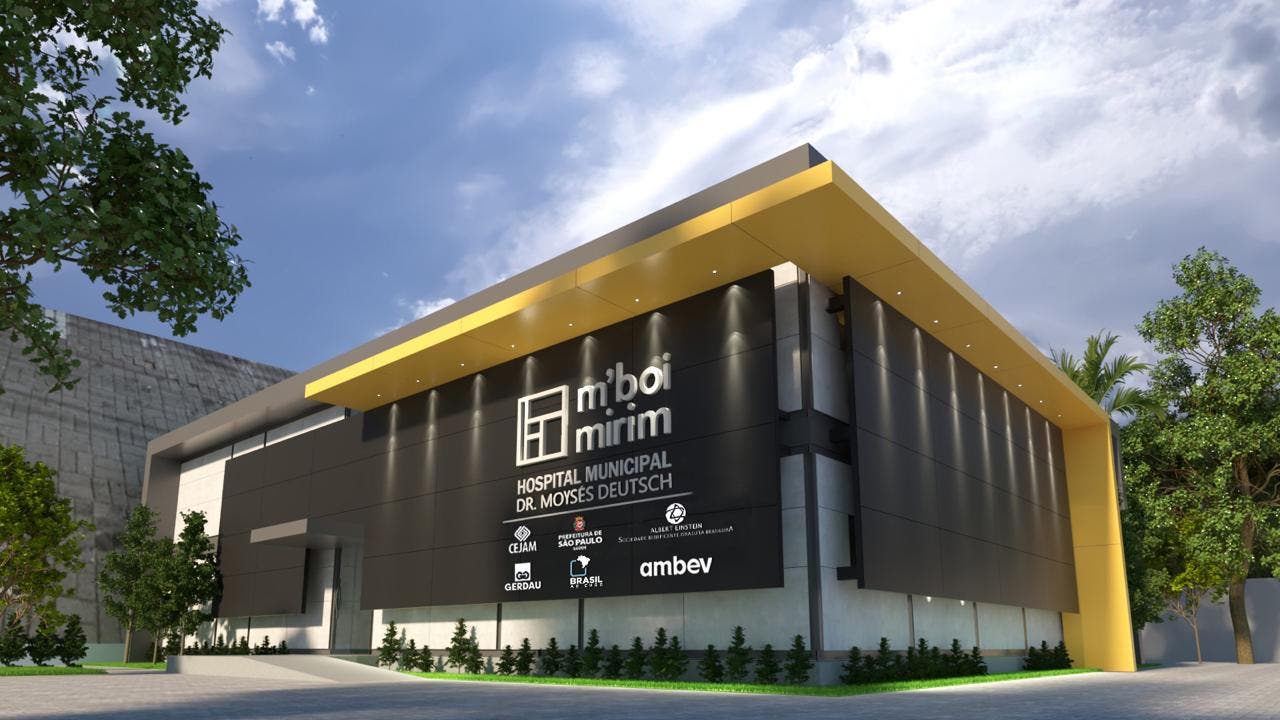RIO DE JANEIRO, BRAZIL – A method with record delivery deadlines is becoming an alternative for hospitals and is also reaching homes; blocks are produced in factories and transported ready-made, with the hydraulic, electrical parts to be fitted on site.
Widely used in Canada, European countries, and Japan, off-site construction is starting to take root in Brazil. The term “off-site” means a construction method that does not take place on the construction site but in a factory.
The model allows several construction stages to occur simultaneously, within a controlled environment and not subject to bad weather, while the land is prepared to receive the development. Operating under the logic of production, with standardized and parameterized stages, the method guarantees delivery in 25% of the time required in conventional construction.
During the pandemic, the method began to be explored as an alternative to field hospitals. Over the last year, the construtech (as startups in the construction sector are called) Brasil ao Cubo, based in Tubarão, Santa Catarina state, delivered five hospital complexes in different parts of the country in the record time of 115 days, totaling 333 new beds.
The Hospital do M’Boi Mirim, in the southern zone of São Paulo, received an annex with 100 new beds in 33 days; in São José dos Campos (SP), the Hospital da Retaguarda was delivered in 36 days. Units were also delivered in Porto Alegre (RS), Ceilândia (DF), and Porto Velho (RO).
According to civil engineer Ricardo Mateus, CEO, and founder of this construtech, another advantage of its off-site construction is modular. The hydraulic, electrical, and ceramic parts are already in the blocks transported and fitted in place. “We have a core of 50 engineers and architects working on the projects to guarantee delivery,” he says. “And the most important thing, in the case of hospitals, is that they are not temporary works; they remain as a legacy for society.”
First accelerated by Endeavor and then by Gerdau, which made an investment of R$60 (US$10.5) million and is now a partner in the company, Brasil ao Cubo has already delivered residential, commercial, and school properties in the final stages of two more projects. One is the new Covid-19 treatment center in São Paulo. The other is a shopping center located in Tubarão, the headquarter city of the construtech.

Popular prices
One of the main construction companies in the country focusing on new undertakings, Tenda is also betting on off-site construction, but for the low-income population of cities in the interior. The new assembly plant of the construction company will be located in Jaguariúna (SP) and should be inaugurated in the second half of the year. The idea is to reach a production capacity of 10,000 units per year by 2026.
“We associate the off-site construction method with the ‘wood frame’ technology,” explains the financial director, Renan Sanches. He says that the technology creates a wall composed of four elements. In the structural part, the panel has pillars made of reforested pine. The “filling” is made of cement, plaster, and a membrane that allows humidity to leave the house but not to enter.
“It is a solid, sophisticated, and more robust wall, which does not mold, does not create cracks and supports as much weight as concrete,” says Sanches. He says that the materials used guarantee acoustic and thermal comfort. “It is a technology used in high-end houses in developed countries that we are bringing to low-income houses here.”
While the factory is being built, Tenda has two pilot projects of the new model. The first, of its own authorship, is a condominium of 49 houses in Mogi das Cruzes (SP). The second – a partnership with Tecverde, the main player in wood frame construction in Brazil – foresees the construction of a condominium of houses in Leme, also in the interior of São Paulo. The sale value of the properties is still being defined, but it will be within the price range of the Yellow GreenHouse governmental incentive program.
“We are in the phase of discussing projects with the city halls,” says the executive from the construction company, which intends to invest R$100 million per year in the purchase of land until 2025. Sanches says that public authorities’ acceptance has been excellent because the projects are not open neighborhoods that could become favelas, but closed condominiums for low-income people. “The idea is to urbanize and include a population that today lives in favelas.”
According to him, the biggest concern is to create a standard within the condominiums, delivering ready-made designs for extra bedrooms and alcoves, which can be built later.
Source: Estadão

